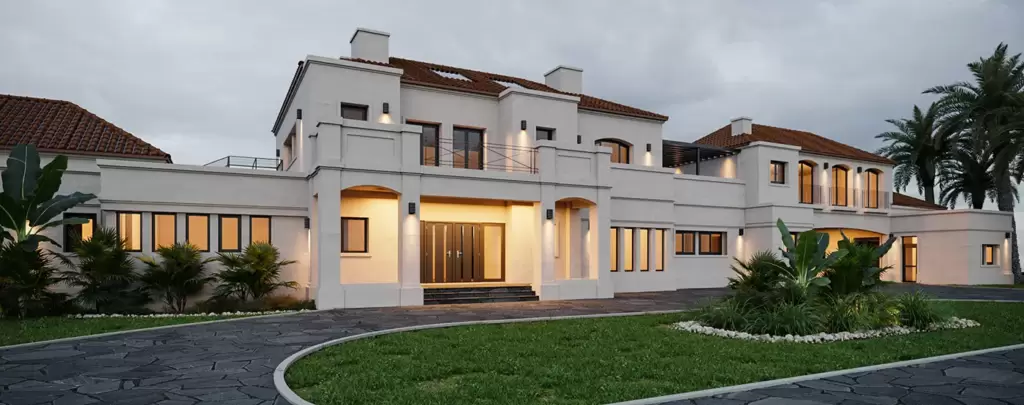
Table of Contents
Introduction: The Importance of Sustainable Materials
Sustainable materials are crucial in construction as they minimize environmental impact and contribute to long-term resource usage. By utilizing eco-friendly options like bamboo, recycled steel, or reclaimed wood, construction projects can significantly reduce their carbon footprint. These materials not only promote biodiversity and ecosystem health but also aid in the conservation of natural resources, making them essential for sustainable development in the industry.
Furthermore, sustainable materials offer durability and resilience that can outperform traditional counterparts. For instance, using insulated concrete forms (ICFs) made from recycled materials can enhance a building’s energy efficiency and reduce maintenance costs over time. This demonstrates that embracing sustainable materials is not just an ethical choice but a practical one from an economic standpoint as well. In this way, prioritizing sustainability in construction becomes a win-win situation for both the environment and project stakeholders alike.
Understanding Sustainable Materials
Sustainable materials, often referred to as eco-friendly or green materials, are becoming increasingly popular in the construction industry due to their positive environmental impact. These materials are designed to minimize adverse effects on the planet while conserving resources for future generations. One example of a sustainable material is bamboo, known for its rapid growth and durability. It’s a renewable resource that can be used for flooring, furniture, and even structural elements in construction. Another important sustainable material is reclaimed wood, which involves repurposing old timber from buildings or structures and giving it new life in modern construction projects.
Understanding sustainable materials also means recognizing the importance of recycled content in building products. Utilizing materials made from recycled components such as glass, metal, or plastic not only reduces waste but also lowers energy consumption associated with manufacturing new materials. For instance, using recycled steel instead of newly produced steel significantly cuts down on carbon emissions and raw material extraction. Furthermore, innovations in technology have led to the development of sustainable insulation materials like cellulose made from recycled paper or wool sourced from ethically treated sheep farms.
Incorporating sustainable materials into construction practices isn’t just about meeting environmental standards; it’s about embracing a more responsible approach to building that aligns with the principles of conservation and long-term sustainability. By understanding these diverse and innovative options for sustainable construction materials, we can contribute to creating more eco-friendly structures while minimizing our impact on the environment.
Benefits of Using Sustainable Materials
Sustainable materials offer a wide range of benefits for construction projects, ranging from environmental advantages to long-term cost savings. By opting for sustainable materials such as reclaimed wood, bamboo, or recycled metals, builders can significantly reduce the demand for newly extracted resources, thus lowering their environmental footprint. Additionally, these materials often require less energy to produce and transport, contributing to reduced greenhouse gas emissions throughout the construction process.
Utilizing sustainable materials also provides an opportunity for builders to enhance the energy efficiency and overall performance of the structures they create. For instance, insulation made from recycled denim or cellulose can offer superior thermal resistance compared to traditional fiberglass insulation. Furthermore, integrating renewable materials like cork or straw into building designs can contribute to better indoor air quality and provide natural moisture control, ultimately promoting healthier and more comfortable living environments. Embracing sustainable materials isn’t just an environmentally responsible choice; it also presents a tangible way for construction professionals to elevate building standards and meet the growing demand for eco-friendly design and construction practices.
Types of Sustainable Materials for Construction
Sustainable construction materials offer eco-friendly alternatives to traditional building materials, reducing the environmental impact of construction projects. One prominent sustainable material is bamboo, known for its rapid growth and durability. It is an excellent substitute for hardwoods, providing strength and flexibility while also sequestering a significant amount of carbon dioxide. Another noteworthy sustainable material is rammed earth, which utilizes locally sourced soil and minimal energy for production. This low-cost yet resilient material has been used for centuries and offers exceptional thermal mass properties, contributing to energy-efficient buildings.
Recycled steel is another valuable sustainable material that significantly reduces the demand for raw resources while offering high structural strength and design flexibility. Its use in construction contributes to diverting waste from landfills and lowering carbon emissions associated with steel production. Additionally, cross-laminated timber (CLT) has gained popularity as a sustainable alternative to concrete and steel due to its renewability and lower embodied energy. The innovative use of CLT in tall buildings showcases its potential in revolutionizing future construction practices with environmentally friendly solutions.


Best Practices for Implementing Sustainable Materials
When it comes to implementing sustainable materials in construction, best practices are essential for long-term success. One key approach is to prioritize materials with a high level of recycled content, such as recycled steel and concrete. This not only reduces the demand for new raw materials but also minimizes waste and energy consumption during production. Additionally, incorporating renewable resources like bamboo and cork can significantly reduce environmental impact while adding aesthetic value to the project.
Another critical factor is the consideration of life cycle assessments when selecting materials. Understanding the environmental impacts of a material from extraction to disposal allows for informed decision-making and ensures that sustainability goals are met throughout the entire lifespan of the construction project. Furthermore, embracing innovative technologies like 3D printing with biodegradable or recyclable materials can revolutionize sustainable construction by reducing material waste and energy usage in building processes. These best practices not only enhance environmental stewardship but also position construction projects for long-term success in a rapidly changing industry.
Case Studies of Successful Sustainable Projects
The case studies of successful sustainable projects exemplify the transformative power of sustainable materials in construction. Take, for example, the Bullitt Center in Seattle, known as the greenest commercial building in the world. This six-story structure pioneers innovative features such as composting toilets, rainwater harvesting system, and solar panels to achieve net-zero energy and water consumption. The Bullitt Center showcases how sustainable materials not only reduce environmental impact but also contribute to economic viability by significantly lowering operational costs.
Another inspiring case is the Beddington Zero Energy Development (BedZED) in London. This mixed-use development embraces sustainable principles through a range of strategies like passive solar design, highly efficient insulation, and use of recycled building materials. By showcasing how sustainability can be seamlessly integrated into urban living, BedZED stands as a model for future eco-friendly developments worldwide.
These two examples underscore the potential of sustainable materials to revolutionize construction practices by prioritizing environmental responsibility while fostering livable spaces that benefit both inhabitants and the planet.
Conclusion: Embracing Sustainability in Construction
In conclusion, embracing sustainability in construction is not just a trend but a crucial shift towards a greener and more responsible future. By prioritizing the use of sustainable materials, construction companies can minimize environmental impact, reduce carbon footprint, and contribute to long-term resource conservation. Moreover, incorporating renewable energy sources, such as solar panels and geothermal heating systems, into building designs can further enhance sustainability efforts.
Furthermore, fostering collaboration between architects, engineers, builders, and suppliers is essential for optimizing the use of sustainable materials and processes in construction projects. This collective approach enables innovative solutions that prioritize eco-friendly practices while maintaining structural integrity and aesthetic appeal. Ultimately, by embracing sustainability in construction, we have an opportunity to construct buildings that are not only durable and efficient but also environmentally conscious and resilient for the generations to come.


